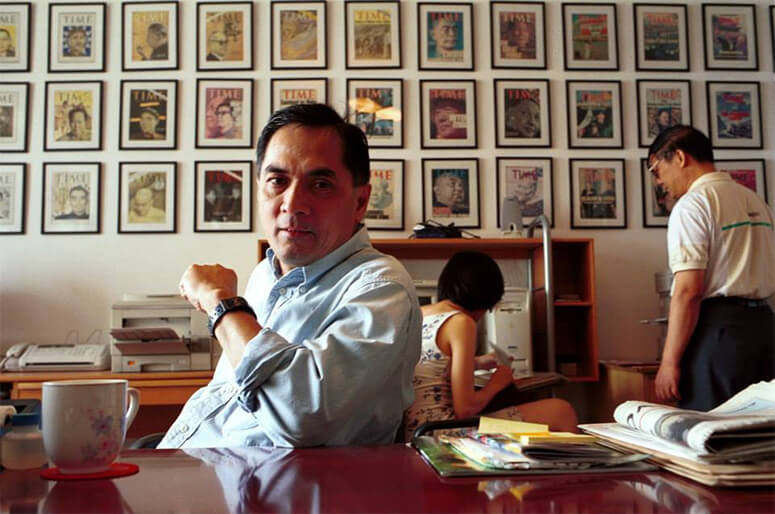Amb. Jaime FlorCruz on RP-China ties and media in the age of AI
Coincidentally, as Philippine-China ties are stabilizing, the ASEAN-China Centre recently hosted the successful ASEAN-China Media Cooperation Forum in Dezhou City, Shandong province, which brought together government leaders, diplomats, and media representatives from across the region.
Among them was Philippine Ambassador to Beijing Jaime FlorCruz, a notable figure who has worn many hats—student activist, journalist as Beijing bureau chief of CNN and Time magazine, and academic as a history graduate and later lecturer at Peking University. Apart from sharing his speech, he also gave Philippine STAR an exclusive interview.
PHILIPPINE STAR: What are your impressions of Shandong, which you first visited in 1979 and now in 2024?
For years, Shandong has been a “home away from home” for me, similar to Hunan. My initial experiences in Shandong date back to 1973-74, living and working in Yantai, a picturesque port city. In 1979, I undertook a journey to Dezhou to locate the burial site of the Sultan of Sulu, a quest that remains one of my most cherished memories. Even during those nascent stages of China’s reform era under Deng Xiaoping, Shandong was a beacon of progress in agriculture, light industries, manufacturing, and trade. The region’s resource wealth was evident even then. The people of Shandong, with their warmth, pragmatism, and deep connection to history and philosophy—after all, it is the birthplace of Confucius—left a lasting impression on me.

Can you share more information about the Sulu Sultan?
To me, two structures are emblematic of our centuries-old friendly Philippine-China ties: the Sulu Sultan’s mausoleum and the Dr. Jose Rizal monument in his ancestral hometown of Jinjiang City, Fujian province. The mound, standing in a sprawling memorial museum in Dezhou City, Shandong Province, is the tomb of a Sultan from Sulu who, over 600 years ago, embarked on a diplomatic journey to China. The sultan from the southern Philippines led one of the biggest foreign delegations to China in 1417. He held a meeting with the Ming Emperor Yongle in Beijing and, on his way home, died in Dezhou. There he was honored with a burial befitting a foreign sovereign.

What are your aspirations for the future of ASEAN-China media cooperation?
My involvement with the ASEAN-China Centre’s programs aligns with our steadfast commitment to ASEAN centrality. My participation in the media forum was driven by this advocacy and my own background as a foreign correspondent in China. Media cooperation is both timely and critical. It’s encouraging to see diverse regional representation, as this fosters a comprehensive dialogue. Through these cooperative efforts, we can address common challenges and promote a deeper understanding among our peoples, enhancing regional solidarity and cooperation.
How do you see the role of media in our ties with ASEAN and China?
The media plays an important role in our understanding of each other and in bridging the gap between our different cultures. If harnessed well, the media can enhance our understanding of each other and bridge the gap between our cultures. Media and cross-cultural communication has entered a new era, characterized by rapid technological advancement and increasing global interconnectedness. We can now reimagine the role of media as a catalyst for global understanding. We can envision a media that transcends cultural boundaries and fosters a truly global dialogue.
You had mentioned AI and fake news in your speech. Your thoughts on these?
ASEAN is aware that rapid digitalization of communication platforms has led to the uptick of fake news, digital hate and extremist views, which may undermine solidarity and resiliency, and create distrust. The advent of artificial intelligence has been front and center of discussions in different fora. We all agree that it must be for good. Nowadays, however, staying informed means wading through thousands of headlines, ads and op-eds, all driven by one goal: to be dramatic and shrill, to catch our attention and keep it. But what we really need is a media source that is dedicated to inform, not just to invite clicks.
The perverted goal of click-bait has given rise to sensationalism, misinformation, propaganda, disinformation, both in the mainstream and especially in the social media. Out there fake news is spreading in various forms of “breaking news,” salacious gossip, and sensational pictures and videos.
Using AI, unscrupulous people can now create photorealistic fake videos by using software tools that can do face swaps and fake someone else’s voice to generate misinformation and fake news. This is known as “deep fake.”
What are your hopes about media in these turbulent times?
We all need to create a safe media environment for our journalists around the world so they can provide accurate and reliable information. That goal is becoming more and more difficult for journalists because, by nature, lies spread faster than truth. A lie, they say, can travel halfway around the world while the truth is putting on its shoes.
I would like to show my respect for the true journalists, all over the world, who never stop fighting misinformation, propaganda, disinformation. Let us then work together to promote a media that respects diversity, encourages dialogue, and promotes peace. If we succeed—and succeed we must—the media can help us bring about a more inclusive, informed, and interconnected world.
How can we help promote better relations between the Philippines and China?
My hope is to see a vibrant exchange of people between our countries—more tourists, students, educators, scientists and media practitioners moving in both directions. These exchanges are vital as they allow for direct, personal experiences that counter misinformation, misunderstandings and miscommunication. Promoting robust people-to-people ties will lay a solid foundation for our bilateral relations, built on friendship and mutual understanding. This was a key message I emphasized during our Independence Day diplomatic reception in Beijing on June 12. By fostering such interactions, we can ensure that our relationship is not only resilient but also enriching for both our nations.



